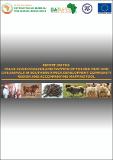| dc.contributor.author | AU-IBAR | |
| dc.contributor.author | Mbole-Kariuki Mary (Phd) | |
| dc.date.accessioned | 2022-10-12T12:08:43Z | |
| dc.date.available | 2022-10-12T12:08:43Z | |
| dc.date.issued | 2022 | |
| dc.identifier.uri | http://repository.au-ibar.org/handle/123456789/1332 | |
| dc.description | Mapping of the Red Meat & Live Animals | en |
| dc.description.abstract | This is a report on the Southern Africa Development Community Region's livestock value chain analysis and mapping of red meat and Live Animals (beef and small ruminants). The report includes a mapping tool to encourage private sector participation throughout the red meat value chain and to develop mechanisms to promote the sustainability of red meat value chains in contributing to economic, food, and nutritional security. | en |
| dc.description.sponsorship | European Union | en |
| dc.format.extent | 83 Pages | en |
| dc.language.iso | en | en |
| dc.publisher | AU-IBAR | en |
| dc.subject | Live2Africa | |
| dc.subject | Livestock Value Chains | |
| dc.title | Report on the Value Chain Analysis and Mapping of the Red Meat & Live Animals in the Southern Africa Development Community Region & Accompanying Mapping Tool | en |
| dc.type | Technical Report | en |
